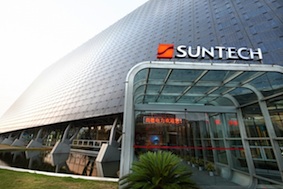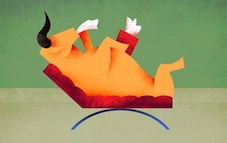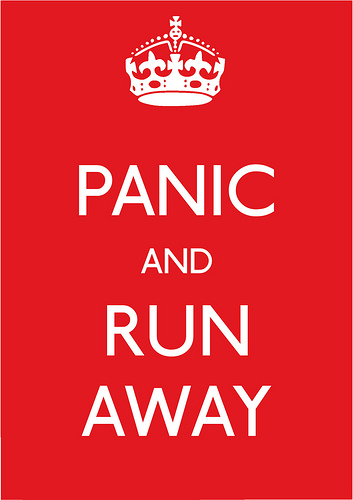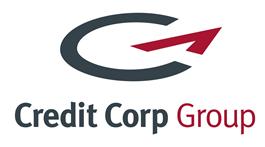Companies
-

Resmed – 3rd quarter results
Ben MacNevin
April 27, 2013
Resmed has just announced another record quarterly result. For those unfamiliar with Resmed, the company is a manufacturer of flow generators and masks for sufferers of Obstructed Sleep Apnea (OSA). OSA is a condition that causes the airways to temporarily close while sleeping (apnea means “without breath”).
continue…by Ben MacNevin Posted in Companies, Insightful Insights.
- 5 Comments
- save this article
- POSTED IN Companies, Insightful Insights
-

Operating leverage and financial leverage is a No No
David Buckland
March 26, 2013
Shi Zhengrong received his Doctorate from the University of New South Wales’ School of Photovoltaic and Renewable Energy Engineering in 1992 under Professor Martin Green, the “father of photovoltaics”.
After working for Pacific Solar, a university spinoff, Dr Shi returned to China in 2001 to start the solar power company, Suntech.
Suntech Power Holdings Limited listed on the New York Stock Exchange and over the two years to late 2007 its share price climbed from $15 to above $88.
continue…by David Buckland Posted in Companies, Insightful Insights.
- 4 Comments
- save this article
- POSTED IN Companies, Insightful Insights
-

The irrational “Mr Market”
Ben MacNevin
March 20, 2013
Charlie Munger is one the most influential investors in the world today. As a founding partner of Berkshire Hathaway with Warren Buffett, Munger is known for his ability to logically process a number of steps in quick succession by employing about 90 relatively simple mental ‘models’.
You may be interested in the link below – to a speech that Charlie Munger presented and in which he discusses many of these models. The speech is well worth a read if you seek to improve your ability to make logical investment decisions (indeed, many of our blog posts reference these models in some way).
continue…by Ben MacNevin Posted in Companies, Insightful Insights, Investing Education, Market Valuation.
-

Wylie E. Coyote or Road Runner?
Roger Montgomery
March 7, 2013
You will have to forgive the rather startling image we have chosen for this blog post. Its really been selected for dramatic effect only.
You may not realise this but all the way back in August 2010 we were BHP bulls, writing; “If you take on blind faith a A$22b profit, BHP’s shares are worth AUD $45-$50 each.”
But then in February 2011 we became a little more circumspect. You can read about the change here.
continue…by Roger Montgomery Posted in Companies, Energy / Resources, Investing Education, Value.able.
-

MEDIA
Which Energy Stocks Does Roger Rate?
Roger Montgomery
February 21, 2013
In the highlights from this edition of Peter Switzer’s Sky Business program broadcast 21 February 2013, Roger provides his latest insights into Origin Energy (ORG) and BHP (BHP), and also explains how applying his Value.able investment strategy still makes Wesfarmers (WES) a stock that Montgomery Investment Management won’t hold in the near term, despite its price recovery. Watch here.
by Roger Montgomery Posted in Companies, Consumer discretionary, Energy / Resources, Insightful Insights, TV Appearances.
-

Credit Corp (ASX:CCP) Half-Year Result
Roger Montgomery
February 1, 2013
First Impressions…
• Revenue growth 12.5%
• NPAT normalised for $2.1m after tax litigation gain, $14.6m, +12%
• NPAT reported, $16.7m, +28%
– Growth has normalised to more sustainable levels from impressive business performance over the past 3 years
by Roger Montgomery Posted in Companies.
- 2 Comments
- save this article
- POSTED IN Companies
-

MEDIA
Back to the Good Old Days?
Roger Montgomery
January 29, 2013
In his first television appearance for 2013, Roger provides his insights into the reasons behind the recent rallies on Australian and Global Markets and how and if these trends will continue in discussion with Ticky Fullerton on ABC1’s The Business (Roger appears at 3:30). Watch here.
This edition of The Business was broadcast on Tuesday 29th January 2013.
by Roger Montgomery Posted in Companies, Insightful Insights, Market Valuation, TV Appearances.
-
Paragon Care Limited (Guest Post)
Harley Grosser
January 10, 2013
The following report has been contributed by Harley Grosser – a private investor. Harley has identified a small company he would like to share his findings and personal beliefs about called Paragon Care Ltd which is aiming to take advantage of the growing aged care industry. Paragon is a distributor and manufacturer of medical equipment, and has attractive prospects if it can continue securing major contracts with hospitals. Investing in small companies that have high growth potential but are yet to produce sustainable earnings is risky, but they can be rewarding for people with the right risk profile and investment horizon. Do not purchase or sell any securities without first seeking and taking personal professional advice.
by Harley Grosser Posted in Companies, Insightful Insights, Intrinsic Value.
-
Credit Corp – Underpromise, Overdeliver
Russell Muldoon
January 4, 2013
Back in August 2012 when CCP’s share price was falling, following what we considered to be conservative guidance for the full year, internally we prepared the following table:
by Russell Muldoon Posted in Companies, Insightful Insights.
- 6 Comments
- save this article
- POSTED IN Companies, Insightful Insights
-
Signs of a merry Christmas at JB Hi Fi?
Tim Kelley
December 24, 2012

JB Hi Fi (ASX:JBH) is a retailer we have followed closely over the years. What attracted us to the business was a focused and well-executed business model that delivered strong returns on equity, coupled with a store roll-out program that allowed those returns to be realized on an expanding pool of assets. Over time, this led to increasing market share and growing EPS. In fact, between 2004 and 2010 EPS grew at a rate of over 30% p.a. compound.
by Tim Kelley Posted in Companies, Insightful Insights, Value.able.